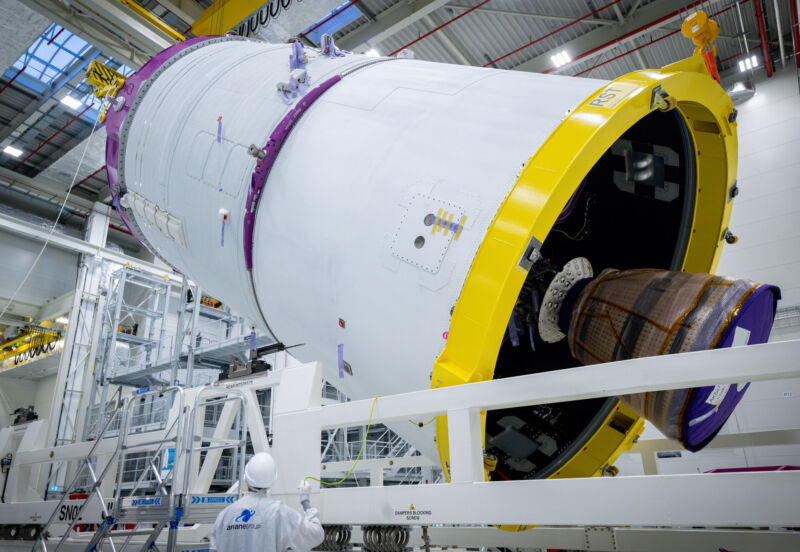
Welcome to Edition 6.31 of the Rocket Report! Photographers at Cape Canaveral, Florida, noticed a change to the spaceport’s skyline this week. Blue Origin has erected a full-size simulator of its New Glenn rocket vertically on its launch pad for a series of fit checks and tests. Late last year, we reported Blue Origin was serious about getting the oft-delayed New Glenn rocket off the ground by the end of 2024. This is a good sign of progress toward that goal, but there’s a long, long way to go. It was fun to watch preparations for the inaugural flights of a few other heavy-lift rockets in the last couple of years (Starship, SLS, and Vulcan). This year, it’s New Glenn.
As always, we welcome reader submissions, and if you don’t want to miss an issue, please subscribe using the box below (the form will not appear on AMP-enabled versions of the site). Each report will include information on small-, medium-, and heavy-lift rockets, as well as a quick look ahead at the next three launches on the calendar.

Russia launches a classified satellite. On February 9, Russia launched its first orbital mission of the year with the liftoff of a Soyuz-2-1v rocket from the Plesetsk Cosmodrome in the far north of the country. The two-stage rocket delivered a classified satellite into orbit for the Russian military, Anatoly Zak of RussianSpaceWeb.com reports. In keeping with the Russian military’s naming convention, the satellite is known simply as Kosmos 2575, and there’s little indication about what it will do in space, except for one key fact.
But wait, there’s more … It turns out the launch of Kosmos 2575 occurred at exactly the same time of day as another Soyuz-2-1v rocket launched on December 27 with a Russian military satellite named Kosmos 2574. The newer spacecraft launched into the same orbital plane as Kosmos 2574, a strong indication that the two satellites have a shared mission. In recent years, Russia has tested rendezvous, proximity operations, and, at least in one instance, a projectile that would have applications for an anti-satellite weapon. You can be sure the US military and a global community of hobbyist satellite trackers will watch closely to see if these two satellites approach one another. If they do, they could continue technology demonstrations for an anti-satellite system. It’s unclear if the recent revelations regarding US officials’ concerns about Russian anti-satellite capabilities are related to these recent launches.
European startup testing methane-fueled rocket engine. Space transportation startup The Exploration Company has continued testing its methane-fueled Huracán engine, which will power an in-space and lunar transportation vehicle under development, European Spaceflight reports. Most recently, the Huracán engine completed another round of thrust chamber testing using liquid methane fuel as a coolant and tested a new thermal barrier coating. The methane/liquid oxygen engine is undergoing testing at a facility in Lampoldshausen, Germany, ahead of use on The Exploration Company’s Nyx Moon spacecraft, a transfer vehicle designed for transportation to and from cislunar space and also capable of Moon landings. The Nyx Moon is an evolution of a transfer vehicle the European startup is developing to ferry satellites between different orbits around Earth.
Other uses for Huracán… The Exploration Company appears to be positioning itself not only as a builder and operator of orbital and lunar transfer vehicles but also as a propulsion supplier to other space companies. In 2022, The Exploration Company received funding for the Huracán engine from the French government. At the time, the company described the engine as serving the needs of “the upper stages of small launchers and those of orbital vehicles.” (submitted by Ken the Bin)




















+ There are no comments
Add yours